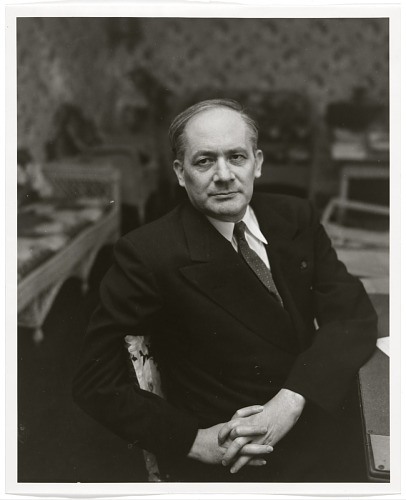
Raphael Lemkin
This year, as every year since 1994, for 100 days, Rwanda commemorates the more than a million men, women, and children, murdered in the genocide against Tutsi. Whenever we define the crime of genocide, the world tips its collective hats to Raphael Lemkin, who named the crime, and campaigned for its recognition into international law.
In the aftermath of World War II, the world’s leaders, and activists began discussions about the creation of institutions through which world peace would be protected, from the disaster that had just come to an end. Among the most notable of these institutions, was what we know now as the United Nations.
New International standards, laws and treaties, to prevent repetition of the kind of grave crimes perpetrated by the Nazis would be enshrined in international law.
For one of these activists however, a Polish born Jewish lawyer, Raphael Lemkin, the work to have the crime of mass murder recognised in international law, had begun decades earlier. The crimes of the Nazis would come as an especially horrifying vindication of his campaign.
Lemkin’s interest in what British war time Prime minister, Winston Churchill, would call the “crime with no name” began at an early age.
He sought to demonstrate that the suffering of the Jews in Europe was part of a pattern of injustice around the world that stretched back through history.
Referring to the persecution of the French Protestants, and the violence against the Jews in his own home of Bialystok, in Poland, he would write, “a line of blood led from the Roman arena, through the gallows of France to the pogrom of Bialystok.”
His interest in laws against mass atrocities, would begin when as a high school student, he read about the massacres of the Armenians, by the Ottoman Turks. National Sovereignty he argued, “cannot be conceived as a right to kill millions of innocent people.”
By early 1940, Lemkin had moved to Sweden, then to the United States of America, where he took refuge from the very crime he had been studying, and against which he had begun to campaign. He had been lucky to escape, 49 members of his family, would be murdered by the Nazis, in the Jewish Holocaust.
In 1944, Lemkin published his most famous work, “Axis rule in occupied Europe.” The book gave a legal analysis of Nazi crimes, in occupied Europe, and it also provided a definition of the then term, genocide. He combined the Greek for family, or race, genos, with the Latin word for killing, cide. The work continues to be important for any study of genocide, mass violence, and of course the Holocaust.
The new definition of genocide, as a crime contravening international law, was widely accepted, and was one of the legal bases for the trials of the Nazis at Nuremberg.
In 1948, he continued his campaign to persuade several countries to adopt a resolution against the crime of genocide.
With the support of the United States of America, the Convention on the Prevention and Punishment of the Crime of Genocide, was tabled before the General Assembly, and was formerly adopted, on 9th December 1948.
Lemkin had also tried to persuade the General Assembly to adopt a similar convention on crimes against humanity, but this was rejected.
This disappointment notwithstanding, it was an extraordinary achievement for one man’s dogged determination, to persuade the world to look in the mirror, and acknowledge humanity’s most ugly site.
Lemkin continued his campaign to persuade the countries of the world to incorporate laws against mass atrocity in their national legal systems.
Ironically, his adopted country, which had also been instrumental in supporting him to get the new resolution adopted, did not adopt the resolution until after Lemkin’s death.
In spite of his important work, and holding several important positions, Lemkin lived in some poverty in New York.
In 1959, at the young age of 59, he had a heart attack and died, leaving a body of work that remains an important tool in the hands of every decent human being, in the struggle against the worst of humanity, where it might be found.

